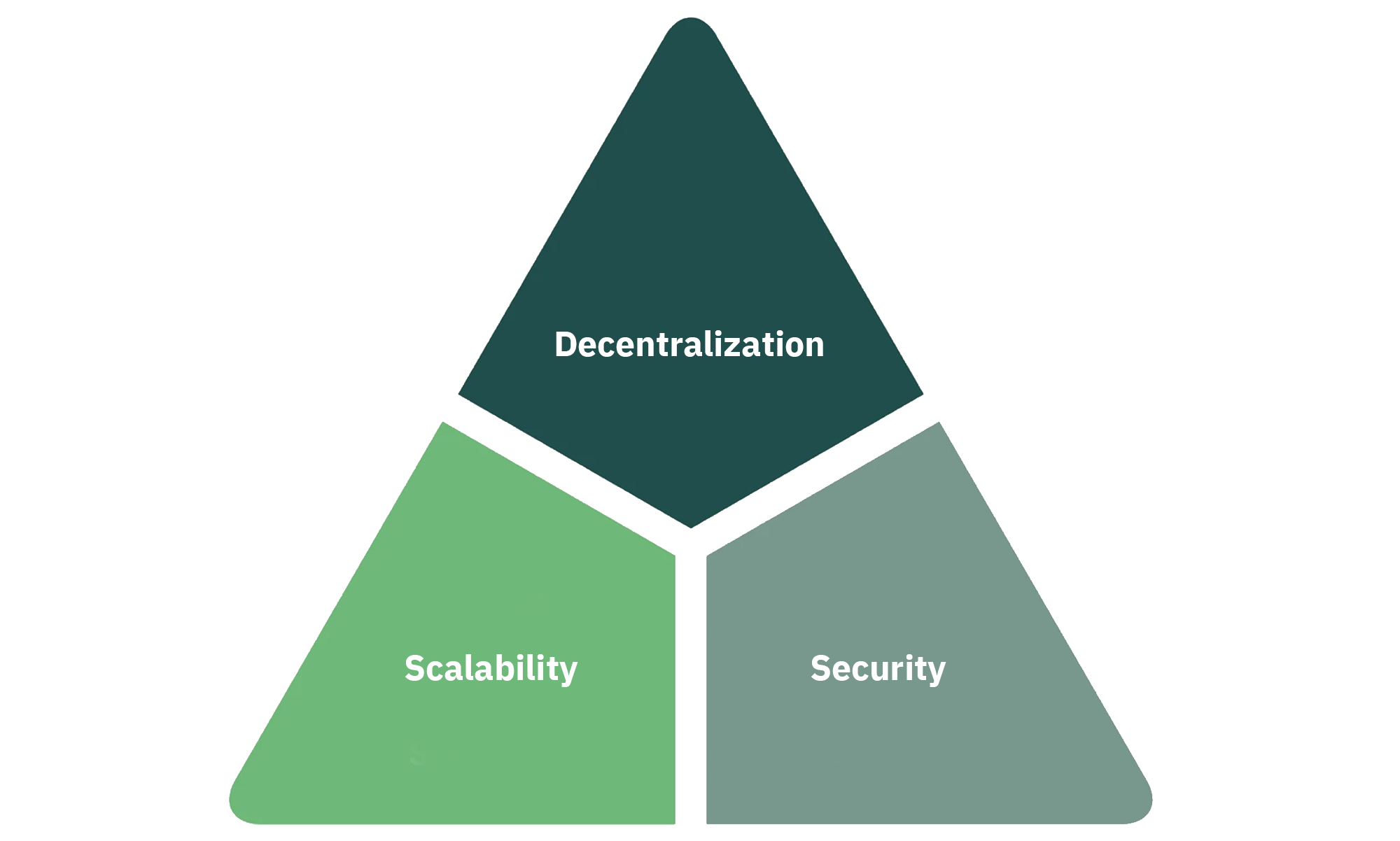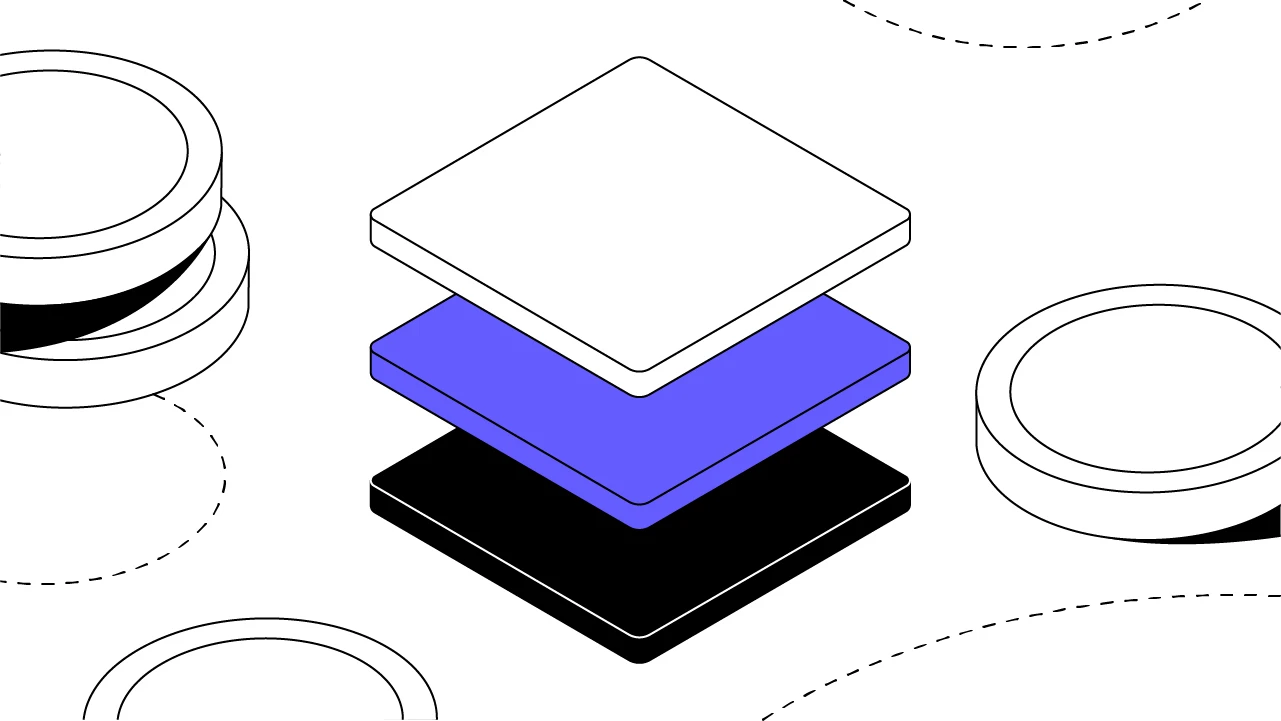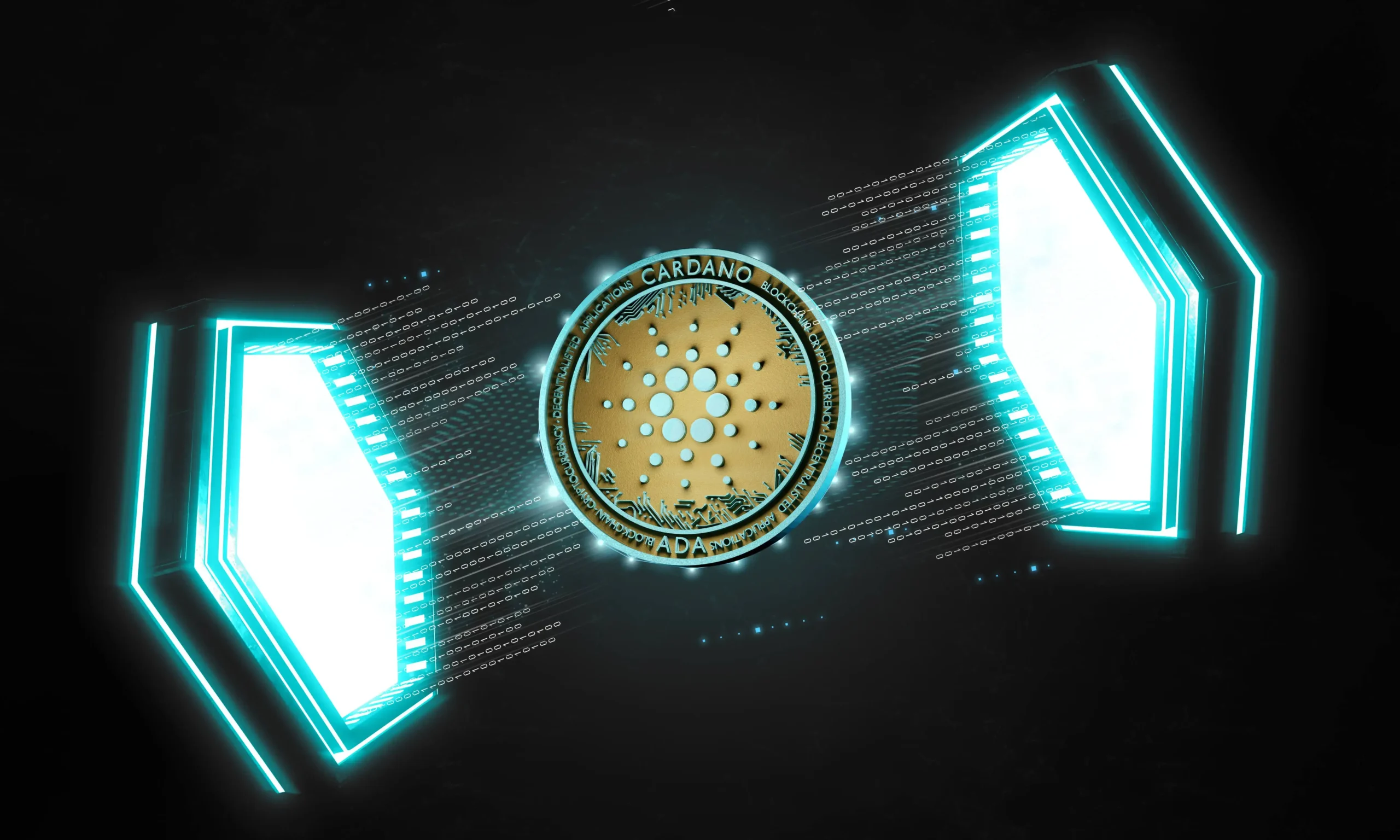Blockchain technology has been on the rise ever since its introduction. It has revolutionized many fields by introducing concepts that ensure that transactions of various natures are conducted securely and transparently and in a distributed way by reaching consensus.
While it has introduced to the world a new way of conducting transactions, there is still one problem that it has been known to face quite often, and we are going to explore what that problem is and how different entities have managed to tackle it. For those who are already familiar with this technology, they would have guessed by now that we are talking about the blockchain scalability challenge.
The Blockchain Scalability Trilemma

Blockchain technology has revolutionized many fields with its distributed, secure, and transparent nature. However, it faces a fundamental challenge known as the scalability problem. There are three primary characteristics any good blockchain must have to make sure that it is working efficiently, something that the users of the technology desire the most.
- Decentralization is the primary and the most notable characteristic of blockchain technology. It ensures that no single entity has complete control over the entire network. It is achieved by distributing the power of the network over a fixed or before-agreed number of responsible parties, therefore ensuring trust in the network.
- The second is the Security that every good blockchain network must provide if it is to make its name in the current digital and financial market. Security in blockchain technology is achieved by using cryptographic techniques that involve generating cryptographic hashes that connect with different blocks in the blockchain to create a record that is immune to any tampering attempts. The other concept responsible for ensuring security is the consensus mechanism like PoW or PoS.
- Lastly, a good blockchain network must be Scalable. Blockchain scalability enables the network to handle multiple transactions at the same time. It has to have the ability to engage with the increasing number of user activities on the network, which means that it needs to take care of high transaction volume without compromising speed or efficiency.
Now, the problem here is that to get an ideal scenario of blockchain operation, all these three characteristics must work in tandem to give the best-desired result. The major problem is that achieving the desired result where all three desired outputs are reached is a very difficult ask.
If you want the blockchain to be decentralized and secure at the same time, then you would have to give up the scalability feature or at least make some major compromises to it.
Conversely, suppose you want to give priority to scalability. In that case, you might have to involve some level of centralized control, which is not the essence of this technology, or give up some features of security, which nobody wants because transaction data can be of a sensitive nature. You don’t want its integrity to be tampered with in any way possible.
For example, Bitcoin, prioritizing decentralization and security, can only process around seven transactions per second, limiting its real-world application.
Meanwhile, Ethereum, striving for improved scalability, was exploring Sharding at first and mentioned it in its roadmap when the transition to Ethereum 2.0 was announced. However, the organization has abandoned that plan and shifted to Danksharding. Danksharding shrinks the main chain workload with blob storage for transactions and lets Layer 2 rollups handle the traffic, boosting scalability without sacrificing decentralization.
Despite the challenges, the blockchain community is actively seeking solutions. Layer 1 and Layer 2 scaling techniques offer some promising results.
- Layer 1 solutions directly modify the blockchain’s core protocol, such as increasing block size or implementing Sharding. These approaches can achieve high transaction throughput but may affect consensus mechanisms and decentralization.
- Layer 2 solutions operate on top of the main blockchain, offloading transaction processing. Sidechainsu and state channels are examples of enabling faster transactions with lower fees without compromising the security of the underlying blockchain.
Ultimately, suppose a blockchain network wants to address its scalability problems. In that case, it must take into consideration how to find the right balance that helps it achieve the three main features mentioned above. It must also complete the desired result without compromising any element or carefully considering some trade-offs to get the best possible outcome.
Layer 1 and Layer 2 Scaling Solutions

Now that we know what blockchain trilemma is let’s look at the possible solutions to address the problem. We have given a brief touch to the layer 1 and layer 2 solutions in the previous section regarding how they can help to mitigate these issues; we are going to expand more in this section about what techniques are involved in these solutions that help to make blockchain operations smoother.
Layer 1 solutions
There are different ways in which layer 1 solutions help solve the scalability problem. They do this by modifying the underlying protocol of the blockchain itself. Some of the key approaches are:
Block Size Increase: Block size increase helps cater to more transaction traffic in the blockchain network by allowing more transactions to be packed in each block. Therefore, if multiple transactions are handled at the same time, the overall throughput of the blockchain network increases significantly.
However, there is a trade-off involved in increasing the block size, which revolves around potentially centralizing the mining power and slowing down the confirmation times for transactions.
Sharding: Sharding is a technique in which a blockchain is divided into smaller segments called shards. These segments allow for parallel processing of transactions at the same time and help significantly resolve the scalability issue.
However, like increasing the block size, Sharding also brings along with it another trade-off, which is that it introduces a new level of complexities in maintaining the security of the blockchain and cross-shard communication.
Proof-of-Stake (PoS) Consensus: Switching from Proof-of-Work (PoW) to PoS replaces energy-intensive mining with staking coins to validate transactions. This can significantly reduce transaction fees and energy consumption, therefore paving the way for higher scalability. However, PoS mechanisms might introduce new forms of centralization and raise concerns about validator collusion.
Layer 2 solutions
Layer 2 solutions in blockchain technology are scaling solutions built on top of existing blockchains to improve transaction throughput and reduce fees by processing transactions off-chain or in a more efficient manner, enhancing the overall network performance. Some prominent examples include:
Sidechains: Sidechains are essentially independent blockchains that operate alongside the main blockchain. Think of sidechains as separate highways that are connected to the main road through entry and exit points. Sidechains are responsible for processing transactions independently from the main blockchain.
However, this doesn’t mean that it is operating completely outside the protocols of the main blockchain. You can consider it as working alongside the main blockchain.
Sidechain provides specific functionalities like offering faster speeds or reducing transaction time, therefore reducing the cost to complete a transaction while still relying on the underlying blockchain for security. However, sidechains carry some potential drawbacks with them.
Drawbacks of sidechains include potential security risks due to different consensus mechanisms, decentralization trade-offs, interoperability challenges, complexity in implementation, and liquidity fragmentation.
Rollups: Rollups are layer 2 solutions that involve bundling multiple transactions together off-chain and then submitting them as a single batch to the main blockchain. They offer significant scalability while inheriting the security of the underlying chain.
Drawbacks of rollups include increased complexity in development. Additionally, there might be concerns related to data availability and the need for users to actively monitor and submit proofs within certain time frames.
State Channels: State channels enable participants to conduct off-chain transactions directly with each other, reducing the need for on-chain processing. These channels keep track of the current state of interactions, and only the outcome is recorded on the main blockchain, significantly speeding up transaction processing and lowering fees.
However, state channels include the necessity for both parties that are involved in conducting off-chain transactions to be present during the entire interaction. Additionally, disputes or non-cooperative behaviour might require on-chain resolution, which reduces the complete off-chain efficiency.
Each Layer 1 and Layer 2 solution offers unique advantages and disadvantages. Those who wish to implement these solutions must carefully consider the respective scalability needs, security requirements, and desired levels of decentralization. Choosing the right approach depends on the specific use case and desired trade-offs.
Case Studies
We are going to look at two examples where Layer 1 and 2 solutions were planned to be implemented and discover whether or not they proved to be successful in addressing the scalability issues of the respective blockchains in which they were implemented.
Ethereum

Ethereum is one of the main examples that come to the top of everyone’s mind as a blockchain that suffered from significant scalability issues. Its initial Proof-of-Work (PoW) consensus mechanism, while robust in security, struggled to process large volumes of transactions, hindering its real-world application potential, not to mention the energy-intensive nature of the PoW mechanism makes it a less desirable choice for those who don’t want to cause more harm to the environment.
The blockchain has since transitioned from PoW to a Proof-of-Stake (PoS) consensus mechanism to address the high energy demands.
The Sharding Upgrade was introduced to tackle the problem of processing large volumes of transactions. The purpose of this process was to divide the Ethereum blockchain into smaller, independent shards to allow parallel transaction processing.
Sharding would have significantly increased the throughput of the system even if the blockchain had to deal with some potential trade-offs discussed in the previous section. However, according to the Ethereum.org website, Sharding is no longer on the roadmap for the Ethereum 2.0 upgrade.
According to the site: “Sharding was originally intended to be the way for Ethereum to scale. However, layer 2 rollups have developed much faster than expected and have provided a lot of scaling already, and will provide much more after Proto-Danksharding is implemented. This means shard chains are no longer needed and have been dropped from the roadmap.”
Cardano

Cardano introduced a layer 2 solution called Hydra to address its scalability issues. Hydra operates as a network of off-chain channels called Heads, where transactions occur swiftly, and fees remain minimal. These Heads connect to the main Cardano blockchain through Relayers, ensuring security and finality.
Noteworthy advantages include modular scalability for individual Heads and a commitment to decentralization through PoS and governance. While Hydra is in development, its real-world performance and security are still under observation.
These are just a few examples of how different blockchain protocols are working to achieve scalability.
Emerging Trends and Potential Solutions
Different emerging trends are being considered to address the blockchain scalability issue. Each technique has its unique use case and is aimed at improving the processing of multiple transactions, storing data, and reaching consensus in a quicker time. We are going to look at some of the possible solutions that can help achieve the desired goal of improving blockchain scalability:
Cross-Chain Interoperability: Cross-chain interoperability focuses on enabling communication and asset transfer between different blockchain networks. By seamlessly connecting disparate blockchains, it reduces congestion on individual chains, enhances overall transaction throughput, and expands the scalability of the entire blockchain ecosystem.
Quantum-Resistant Cryptography: Quantum-resistant cryptography involves the use of cryptographic algorithms that can withstand attacks from quantum computers. As quantum computing poses a potential threat to existing cryptographic methods, adopting quantum-resistant algorithms ensures the long-term security of blockchain networks, contributing to their scalability by safeguarding against future cryptographic vulnerabilities.
Blockchain Compression Techniques: Blockchain compression techniques aim to optimize the storage and transmission of data within the blockchain. By reducing the size of transaction data or employing efficient compression algorithms, these techniques minimize the strain on network resources, enabling faster data processing and improving overall scalability.
Off-Chain Solutions and Hybrid Architectures: Off-chain solutions involve moving certain transactions off the main blockchain, reducing congestion and improving scalability. Hybrid architectures combine both on-chain and off-chain elements to leverage the strengths of each. By offloading non-critical transactions to secondary layers, such as state channels or sidechains, these approaches enhance the efficiency of the overall blockchain system.
Artificial Intelligence and Machine Learning: Artificial Intelligence (AI) and Machine Learning (ML) are employed to optimize consensus mechanisms, validate transactions, and predict network demands. By dynamically adjusting parameters based on real-time data, AI and ML contribute to more efficient resource allocation, reducing transaction times and adapting the blockchain network to varying workloads, ultimately improving scalability.
Conclusion
These new trends highlight how the world of blockchain scalability is evolving. Each method has its benefits and requires careful consideration of what it can do well and what challenges it might face.
By being open to new ideas and dealing with complex issues, the future of blockchains that can handle a lot of transactions looks exciting. This could bring about big changes in different fields and change the way we use decentralized systems.
Note: At the end of the day, we would like to caution everyone regarding the risks associated with different blockchains and request our readers to do their due diligence and conduct their research related to information regarding other blockchains so that they can make informed decisions.




